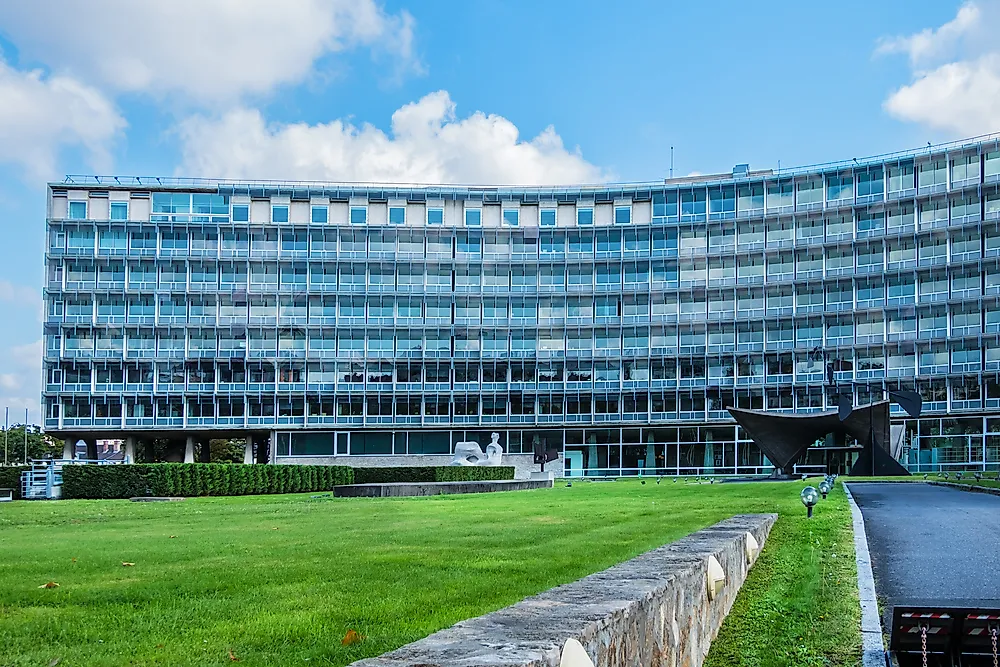Where Is The Headquarters Of The UNESCO Located?

The UNESCO Headquarters
The headquarters of UNESCO (United Nations, Educational, Scientific and Cultural Organization) is located on Place de Fontenoy, in Paris, France. The offices of UNESCO are found in the Y-shaped main building which was inaugurated in November 1958. The building was designed by three architects with different nationalities after an international committee approved the construction. The main building is often referred to as the three-pointed star and consists of 72 columns of concrete piling which holds the structure. The architectural qualities of UNESCO’s headquarters make it one of the most famous and recognizable structures in the world.
The headquarters site also consists of three other buildings. A second building known as ‘’Accordion’’ holds the plenary sessions during the General Conference. The egg-shaped hall where the conferences are held is found in this building. A third building also occupies the headquarters site and takes the form of a cube. The final building contains two office floors which are hollowed out forming small sunken yards below the street level.
Aside from breathtaking architectural forms, the buildings also contain magnificent pieces of art that are accessible to the public. During the construction, UNESCO commissioned numerous artists from various backgrounds to come up with artworks that would adorn the completed buildings and future premises. The type of art is intended to elicit the peace and harmony that the organization looks to promote and preserve in many places around the world. Over the years, UNESCO has become a universal museum that represents the artistic creations of famous and unknown artists from various parts of the world.
UNESCO Institutes and Centers Around the World
UNESCO has specialized departments branching from the main activities of education, social and human sciences, natural sciences, communication and information, and culture. These special departments are known as institutes and are located in various parts of the world. These include the International Bureau of Education headquarters in Geneva, Switzerland, the UNESCO International Institute for Capacity Building in Africa in Adis Ababa, Ethiopia, the UNESCO European Centre for Higher Education in Bucharest, Romania, and the Institute for Statistics in Montreal, Canada.
UNESCO is responsible for the conservation of World Heritage Sites in 167 countries. This represents about 1,073 heritage sites which UNESCO preserves, covering almost 10 million kilometers squared. In addition to protecting sites of cultural significance around the world, UNESCO is involved in multiple projects that foster equitable and sustainable development.
UNESCO’s vision is to strengthen the intellectual and moral capacities of mankind by fostering peace and mutual understanding. The vision is achieved through dedicated programs and by promoting the cultural heritage of all peoples around the world. A special emphasis is placed on scientific programmes to promote development through cooperation. A key pillar of UNESCO’s vision is to promote freedom of expression through democracy and the free flow of ideas and knowledge.
The Intangible Cultural Heritage
UNESCO is not only concerned with the preservation of physical forms of cultural expression, but also the intangible cultural heritage. Since 2010, a list was drawn that includes intangible cultural practices and forms of expression that need to be safeguarded and awareness raised about their significance. The list includes elements from various cultures around the world.











